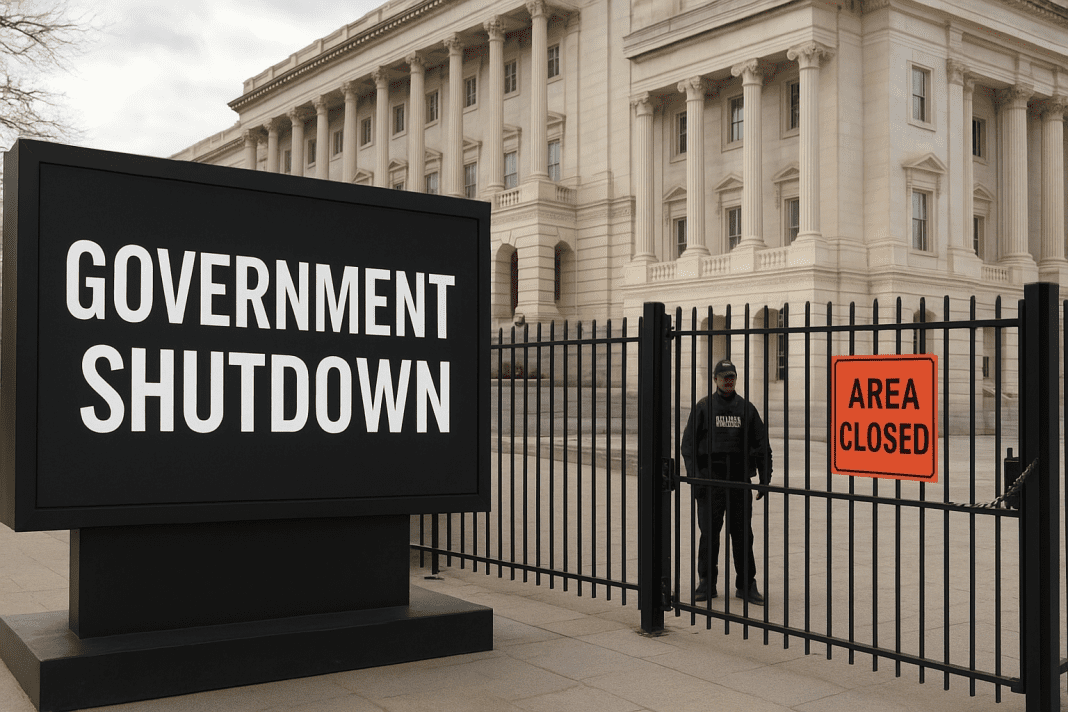The United States government shutdown officially began early Wednesday morning after leaders in Washington failed to agree on a funding deal. At midnight, federal funding expired, forcing hundreds of thousands of workers and many government programs to come to an immediate halt.
Government Shutdown Begins After Midnight Stalemate
On the White House website, a statement declared, “Democrats Have Shutdown the Government,” complete with a clock showing how long the government has been closed. But Democrats strongly disagreed, pointing their fingers at Republicans and President Donald Trump.
California Governor Gavin Newsom posted on X, the platform formerly known as Twitter, “Donald Trump just shut down the government.” His words highlighted how both sides are now blaming each other for the collapse in talks.
Pete Hegseth vows to fix “decades of decay” as Trump orders military into America’s streets
Kamala Harris also weighed in. She wrote that Trump and Congressional Republicans had triggered the government shutdown by refusing to stop health care costs from rising. Harris stressed that Republicans control the White House, House of Representatives, and the Senate, calling it “their shutdown.”
The political finger-pointing continued as the shutdown set in motion wide-reaching impacts across the nation.
Government Shutdown Forces Hundreds of Thousands Into Furloughs
With the government shutdown in effect, federal employees across the country are facing sudden disruption. The government is forcing many workers into furloughs, requiring them to stay home without pay until it reopens.
During the last major shutdown in 2013, agencies furloughed about 850,000 federal employees. This time, the Congressional Budget Office (CBO) estimates that agencies could place around 750,000 workers on unpaid leave.
The daily cost of their lost paychecks amounts to roughly $400 million. These figures show how quickly a government shutdown drains both individual incomes and the overall economy.
Some agencies may furlough more staff the longer the government shutdown continues, while others could recall certain employees if essential work demands it. Furloughed workers are expected to receive back pay when the shutdown ends, but that offers little relief to families suddenly caught without a paycheck.
YouTube to pay $24.5 million to settle lawsuit related to President Trump’s account ban
The Office of Management and Budget under Trump has gone further, warning agencies to prepare for permanent job cuts if the shutdown lingers. A recent memo even directed departments to consider mass firings, creating added fear among federal employees.
Images from Washington showed the immediate impact. On March 4, U.S. Capitol Police closed off security gates along 1st Street Northeast. The tense atmosphere grew as Trump prepared to address Congress later in the evening, even as federal services remained frozen.
Shutdowns Have a Long History in the U.S.
This government shutdown marks the 14th time since 1980 that the federal government has either closed or experienced a funding gap. Each time, the disruption has sparked political battles and nationwide consequences.
The current shutdown began at midnight after Democratic and Republican leaders failed to find common ground, not even for a temporary deal to keep operations running past the end of the fiscal year.
It remains unclear how long the government shutdown will stay in place or how widespread the disruptions will be.
The longest shutdown in U.S. history also happened under Trump’s presidency. In late 2018, the government shut down for about five weeks, largely due to disagreements over funding for Trump’s proposed U.S.-Mexico border wall. During that period, many workers went without pay for more than a month, while services from national parks to food inspections were severely affected.
Hundreds protest outside ICE building in Portland after Trump orders troop deployment
The history of shutdowns shows how deeply tied they are to political disagreements. While each party blames the other, the burden often falls hardest on workers and ordinary citizens who rely on federal services.
In the current situation, agencies are preparing for large-scale disruptions. Programs that handle health, safety, and daily public services are expected to pause or operate at reduced capacity. The uncertainty for workers and the public adds to the already tense political standoff in Washington.
As of now, the government shutdown continues with no clear resolution in sight. The clash between Trump, Republicans, and Democrats has pushed the government into another costly and disruptive closure, echoing past political fights that left lasting marks on the country.

